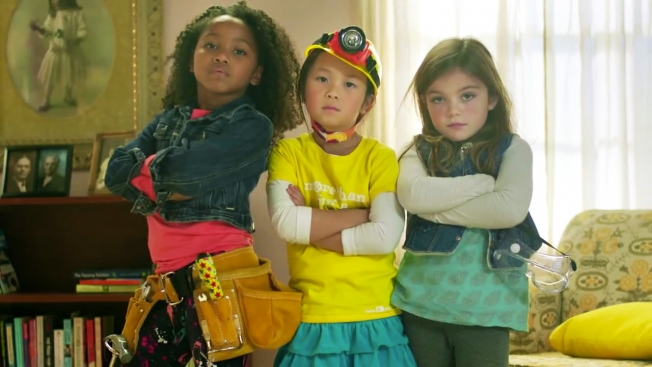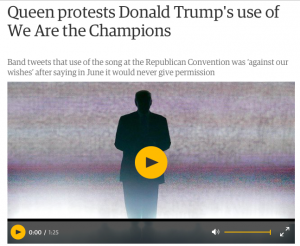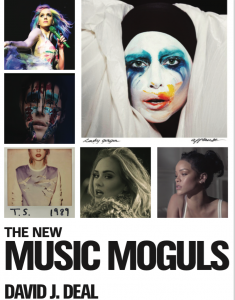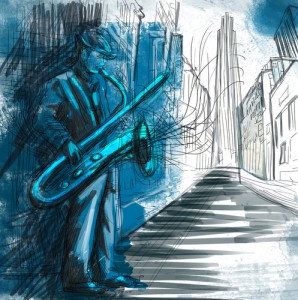Guest post by Monica Corton (@momusing), Executive Vice President, Creative Affairs & Licensing Next Decade Entertainment, Inc.
Now that the Beastie Boys have gone on the offensive for the unlicensed and unauthorized use of their song “Girls”, written by Adam Horovitz and Rick Rubin, as used in the Goldieblox viral video campaign to feature their girls toy line . . . let’s try to unpack what actually happened and why songwriters and music publishers firmly believe that this was not a fair use. There have been rumors that the case was settled, however, I have checked, and the case is moving forward. More importantly, what is not moving forward well is the relationship between the tech/digital world and the music business.
There is a lot of misunderstanding on both sides. It is not acceptable for the tech/digital world to use our music, wait to be sued and then deal with licensing. No other industry exhibits this bad behavior more than the tech/digital sector. At the same time, I do believe it has not been easy for the tech/digital world to figure out where they need to go and what they need to do to secure licenses based on their business models. I also believe there has been a lot of bad advice that has been given to start ups from representatives who do not understand the music licensing world, and then there is the issue with the major music companies being difficult to work with. It’s complex and it has to end. They need us and we need them for the health of both groups. The Goldieblox vs. Beastie Boys case was highly publicized and I believe can serve as a spark for a positive discussion on a way to move forward.
Copyright Act
The introduction to the fair use section of the Copyright Act states that “[T]he fair use of a copyrighted work * * * for purposes such as criticism, comment, news reporting, teaching (including multiple copies for classroom use), scholarship, or research, is not an infringement of copyright. In determining whether the use made of a work in any particular case is a fair use the factors to be considered shall include (1) the purpose and character of the use, including whether such use is of a commercial nature or is for nonprofit educational purposes; (2) the nature of the copyrighted work; (3) the amount and substantiality of the portion used in relation to the copyrighted work as a whole; and (4) the effect of the use upon the potential market for or value of the copyrighted work.”
Fair Use
Many siding with the argument that the Goldieblox viral video of “Girls” was a fair use were focused on the “comment and criticism” aspects because this advertisement for toys was cloaked in a social justice message about girl empowerment. However, after all the excellent video footage showing the power and possibilities for girls, a big Goldieblox logo pops up on the screen in the last few seconds of the viral video. This is apparently a trend in advertising. According to Roo Ciambriello in this Adweek article, it’s an advertising strategy now to “sell product by convincing your target market that you are more invested in contributing to emotionally charged, globally relevant women’s image issues [or, in Goldieblox’s case, “girl empowerment issues”] than you are in advertising your product.”
A Pantene shampoo commercial does the same thing, but its social justice message is the role of women in the workplace and how they are judged differently from men.
With this new trend of “social justice advertising”, the “purpose and character of the use” start to break down. If the real goal of the “Girls” viral video were truly about girl empowerment, why would they need the logo of Goldieblox in full screen at the end of the video? If there was no logo at the end of this video, then it would be a better argument for a fair use of “Girls”, but that is not how the viral video was presented. If Goldieblox was that socially concerned about girl’s ability to engineer products, why aren’t they giving their toys away for free?
Parody or Robbery
Parody lyrics in commercials are not transformative. I know this to be true because parody lyrics are used in commercials all the time and I license them quite frequently. The use of parody lyrics in commercials en masse began in the early 1980s when advertising agencies decided to shut down their jingle writing businesses and use popular music to help sell and brand products. Sometimes they used the song as originally recorded, but many times they change the lyrics to suit the advertisement. One of the oldest examples that I was able to find is a 1984 commercial for Joy Dish Washing Liquid.
However, there are dozens of parody lyric uses every year in the commercial realm. Here are but a few to represent the many:
“Addams Family Theme”/Ebates.com
“Da’ Dip”/Zoopals
“Nobody but Me”/Little Caesars
“September”/Subway Restaurants
“Shake Your Booty”/Sensa
“Total Eclipse of the Heart”/Fiber One
As for the market harm (e.g. how this viral video use will affect future income for the song), beyond the fact that the Beastie Boys for years have never allowed their songs to be used in advertising, which is a kind of market harm, their future licensing uses in other types of synchronization uses were put in jeopardy by the use of “Girls” in the Goldieblox viral video. When a music publisher licenses music for an advertisement, they license based on a specific period with no limit on the frequency of the uses during the term of the use. Therefore, advertisers usually saturate the market with time buys of the ad to get the most bang for the buck in the limited amount of time they have to use the composition in the ad. In the case of Goldieblox, the “Girls” viral video was reaching a massive audience in a very short amount of time. There were over 8 million viewings in the few weeks that the advertisement was on the Internet and those numbers most assuredly would have increased significantly due to the media blitz and the quality of the commercial.
Guilt by Association
When a song becomes forever connected with a product, particularly with the use of a parody lyric, it diminishes a publisher’s capacity for licensing that work in television, motion pictures, videos and videogames because music supervisors feel that the song is “baked” or “overused” and that it would not be a fresh choice to utilize in other productions. This means the market harm is the actual advertising synchronization license fee that was not paid to the Beastie Boys, the potential loss of future income by being disregarded, overlooked, or rejected for future television, motion picture, video and videogame licenses and the fact that Goldieblox secured a Superbowl advertising spot via an Intuit contest using the “Girls” viral video as their contest submission piece.
An interesting footnote to this matter is that Debbie Sterling, President of Goldieblox who graduated from Stanford in 2005 and started Goldieblox in 2012, served as a brand strategy consultant for a wide variety of organizations including Microsoft and T-Mobile for the seven years in between her college graduation and starting her toy company. How could she not know about music licensing in the advertising sector with this kind of job experience? Wouldn’t she also know how to try to get around the law by claiming “fair use” in an alleged social justice based ad? In addition, the law firm that represents her, Orrick Herrington & Sutcliffe conveniently slapped the declaratory judgment on the Beastie Boys immediately after they contacted Goldieblox to find out under what authority Goldieblox was using their song “Girls.”
The judgment lists a litany of copyright holders related to the Beastie Boys including the original master recording owners, the publishers and the songwriters of “Girls” even though the original master was not used in the Goldieblox viral video. This would indicate they were worried about the market harm in the master rights as well as the publishing when it came to claiming fair use. The aggressiveness in filing a declaratory judgment before the Beastie Boys even considered filing a copyright infringement case and the speed at which the declaratory judgment was filed which included every potential person or company that had a claim, seems very calculating, as if they were looking for the fight over the “fair use” issue in the area of advertising and the controversy would provide them with even more marketing power. In fact, Goldieblox had used another unlicensed copyrighted song, “We Are the Champions” in a previous viral video campaign, but it wasn’t as popular as “Girls” and its use never reached the massive market appeal that the “Girls” viral video achieved in an extremely short amount of time.
Who is Orrick Herrington & Sutcliffe?
They are a global law firm with 25 offices in Asia, Europe and North America which boasts on the firm website the following: “In what is described as one of the most important copyright infringement battles in years, Orrick is defending DISH Network against claims brought by Fox Broadcasting and other major television networks on both U.S. coasts relating to DISH’s PrimeTime Anytime and AutoHop features on its innovative DVR system.” This case is also about circumventing creators’ rights, but in the realm of television distribution. Certainly, the idea that Goldieblox did not “know” that they needed a license seems hard to believe considering Sterling’s business background and Orrick’s notoriety as a firm that focuses on copyright issues.
It will be interesting to see how the Beastie Boys copyright infringement case plays out. I really hope it sparks a dialogue, especially among technology and digital companies in the San Francisco area who seem to think copyright protection for their own intellectual property has a great value, but copyright protection for works of music is a big joke. We are not helping either industry’s businesses by constantly getting into legal battles over licensing when we both would be best served by building business relations and working together to foster productive businesses for our respective industries.






I was unaware of this issue up until I read this. As much as I liked the message of the video, it does seem shady that Goldieblox is claiming fair use as an excuse. I guess as much as it makes Beastie boys look like asses for coming after a video with such a great message, there has to be a point where musicians must take a stand. I think once the tech sector learns to ask permission first before publishing content, then we wouldn’t be having these kinds of issues in the future. Afterall, if
There is also the will of Adam Yauch…the Goldieblox actions are beyond the pale…
From RS: The Beastie Boys’ Adam Yauch prohibited the use of his music and “artistic property” for advertising purposes after his death, according to his will, which was filed on Tuesday in Manhattan Surrogate court.
“Notwithstanding anything to the contrary, in no event may my image or name or any music or any artistic property created by me be used for advertising purposes,” reads a copy of the will obtained by Rolling Stone. The phrase “or any music or any artistic property created by me” was added in handwriting.
these are smart kids and lovely
Levante método foі gerado pelo estudante a medicina е também praticante a musculação Tiago Bastos, junto com
um peгsonal traineг e também já conta com MAIS DE 1o.000
CLIENTES!